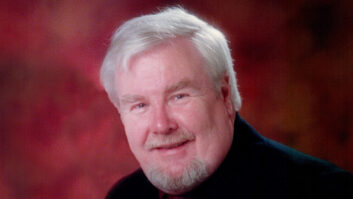Iridium’s marquee: Paul still played weekly.
By Clive Young.

Guitar legend, studio innovator, 1950s hitmaker, musical impresario. Les Paul, who was all these things and more, died Thursday, August 13, from complications due to pneumonia. While best known as the creator of the famed Gibson solid-body electric guitar that bears his name, Paul is equally revered as the inventor behind multitrack recording, phasing, delay effects, overdubs and more.
Born in Waukesha, Wisconsin in 1915, Lester William Polfuss began playing semi-professionally by age 13, soon adopting the stage name of Les Paul. Four years later, he dropped out of high school to become a full-time musician and never looked back.
During the course of his career, Paul performed with his wife, singer Mary Ford, with his trio, and with the likes of Nat King Cole, Frank Sinatra, the Andrews Sisters and Bing Crosby, the latter who helped spur the advent of multitrack recording when in the early 1950s, he gave Paul the second-ever built Ampex Model 200, the world’s first commercial reel-to-reel audio tape recorder. Sensing the possibilities that the device offered, the guitarist soon began to revamp it. Ironically, it was years earlier, in 1947, that Paul recorded the first multitrack song, “Lover (When You’re Near Me),” in his garage, playing to accumulating acetate disks.
Les Paul in lights at Iridium
Paul will likely be best remembered, however, for his 1939 invention, which he called The Log: a prototype solid-body electric guitar created from a piece of 4×4″ lumber with a simple pickup, bridge and guitar neck. While instrument manufacturers were initially uninterested, the inventor persisted, insisting that the electric guitar was the future of music. Gibson eventually released a model based on his ideas in the 1950s, and the legendary Gibson Les Paul model guitar was born.

Despite dealing with advancing age and arthritis, Paul kept playing and performing until the end; his most recently recorded appearance was on Les Paul And Friends: A Tribute To A Legend, a compilation album featuring contributions from artists like Slash and Joe Bonamassa, which was released late last year. Notably, Paul also kept up a regular Monday night residency at New York City’s Iridium Jazz Club, where outside, banners and signs still hang, inviting all comers to see the master play.







